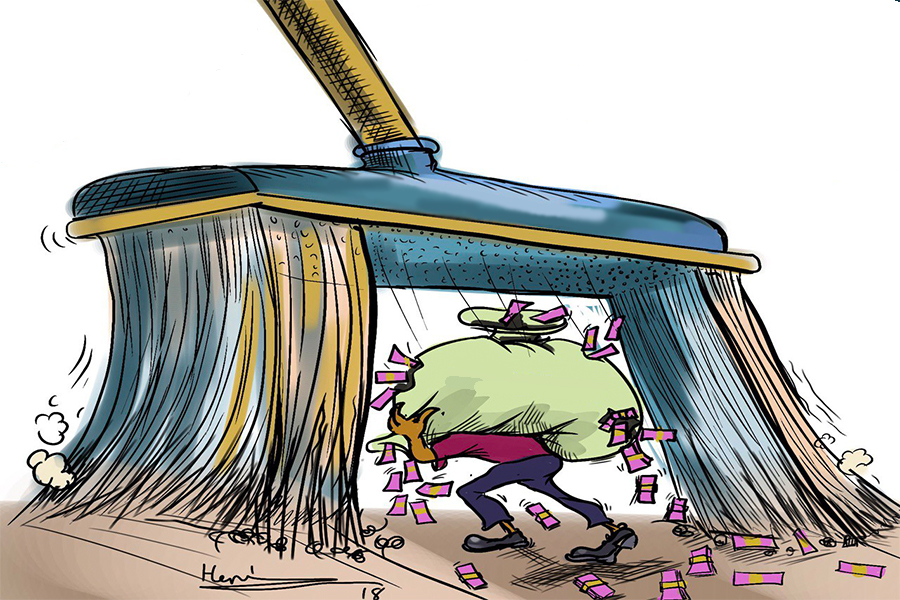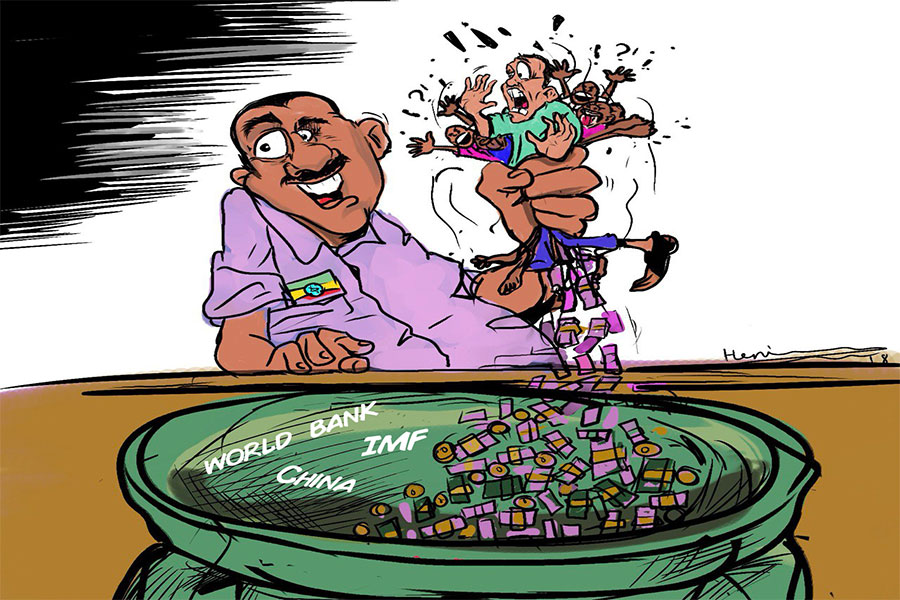
Photo Gallery | 180328 Views | May 06,2019
Oct 12 , 2025. By NAHOM AYELE ( FORTUNE STAFF WRITER )
A devastating storm on August 6, 2025, swept through the flower belt in Bishoftu (Debrezeit), leaving behind a trail of destruction in the lucrative floriculture industry. Heavy rains, powerful winds, and hail battered a cluster of 10 farms, with nearly 100hct, almost 40pc of cultivated land, rendered unproductive. The storm’s passage lasted four hours, but its effects could stretch across the fiscal year.
A violent storm that ripped through the flower belt of Bishoftu (Debreziet), 45Km east of the capital, in early August has left the lucrative horticulture export sector reeling, with damages estimated to exceed 100 million dollars in potential lost revenue this fiscal year.
The storm, marked by heavy rain, strong winds, and hail, ravaged greenhouses, obliterated crops, and paralysed operations across several farms clustered in the town, a hub for the country’s floriculture industry. Federal agriculture officials and industry operators warn that, unless urgent remedial measures are taken, Ethiopia risks not only losing a considerable portion of its annual foreign exchange earnings but also its hard-won place in international flower markets.
The four-hour deluge on August 6, 2025, wreaked havoc on a tightly-knit cluster of 10 farms, eight of which are dedicated to floriculture. Of the 252.6hct under cultivation in the area, nearly 100hct, almost 40pc, were rendered unproductive.
“Everything we built over a decade was gone overnight,” said Meskerem Abebe, farm manager, at Bishoftu Horticulture Cluster.
The Ministry of Agriculture has since spearheaded damage assessments, with State Minister Sofia Kassa (PhD) visiting Bishoftu. Following her visit, a technical team was formed to conduct a full assessment.
“To support them, we first needed to understand the scale of the damage,” said Mekonnen Solomon, horticulture export coordinator at the Ministry.
He urged the Ministry of Finance to grant duty-free import privileges to help affected farms access fixed assets, raw materials, and capital goods necessary for recovery. The urgency comes from more than financial loss. The fallout, experts warn, stretches well beyond the perimeters of the damaged greenhouses.
“We aren't merely talking about greenhouse frames and lost plants,” Mekonnen told Fortune. “We’re talking about companies losing international buyers, staff losing jobs, and Ethiopia losing credibility.”
Mekonnen estimated the damage could cost the sector 102 million dollars in export earnings for the 2025/26 fiscal year, 15pc of the horticulture sector’s expected foreign revenue. Recovery timelines range from five to 12 months, depending on the speed of reconstruction and access to duty-free imports. More worrying, however, is the sector’s exposure to long-term reputational risk.
“Delays can invite pests and diseases, tarnish the quality of exports, and ultimately reduce demand,” Mekonnen said.
This is especially precarious as major flower buyers from Ethiopia, the Netherlands, Saudi Arabia, the UK, and the US, are known for stringent quality requirements. Among the hardest-hit is Joytech Plc, a flagship flower exporter. It lost 15hct of crop, a one-hectare greenhouse structure, and a state-of-the-art 1,400-Sqm tissue culture lab. Total damages are pegged at 115 million Br. The company is rebuilding, but the clock is ticking.
Its CEO, Bisrat Haileselassie, likened the storm to a tornado.
“It wasn’t only flooding," he told Fortune. "It was a direct hit. Without duty-free access to critical materials, recovery is not sustainable.”
Vegpro Flower Farm Plc, another major operator, reported equally staggering damage. Over 95pc of its 26hct farm is gone. With two million dollars in capital goods lost and 600 workers currently idle, the farm has suspended production. Company managers fear the cost of recovery could double if duty-free permissions are delayed.
“We’ve submitted everything to the Ministry of Finance,” said Mahendra Patel, its manager. “But time is not on our side.”
The Ministry of Agriculture has formally requested that the Ministry of Finance not only grant duty-free import status but also extend the voucher periods for raw materials already imported. In a bid to prioritise the sector, it also urged federal and city authorities to fast-track administrative services for affected firms.
However, despite sympathetic overtures, no formal decision has been made. Industry observers, including Yohanes Abebe, an advisor to the Ethiopian Horticulture Producer Exporters Association, warn that indecision has a cost.
“These farms built their market relationships over the years," he told Fortune. "Without immediate support, they could lose everything.”
Dawit Kejela, a tax policy expert, supports the call for exemptions.
“This wasn’t mismanagement but an act of nature," he said, proposing a value-based exemption scaled to the property destroyed. "The government must respond accordingly.”
The broader implications of the disaster also revealed an urgent need for climate resilience planning. Mamo Kassegn, a hydrometeorologist at Addis Abeba University, pointed to the Eastern Rift Valley’s exposure to strong seasonal winds, such as the Somali Low-Level Jet, a phenomenon not fully accounted for in current farm designs.
“There is no perfect defence against these forces,” Mamo said.
But he was quick to criticise the Ethiopian Meteorological Institute for failing to issue early warnings.
“This could have been mitigated,” he said.
The domestic floriculture industry, comprising nearly 70 farms over 1,600hct, has grown into one of the country’s top foreign exchange earners, following gold and coffee. It also supports tens of thousands of jobs, directly and indirectly.
For now, the flowers are not blooming in Bishoftu. The soil is waterlogged, the greenhouses are in tatters, and exporters are grasping at hope, expecting that help will arrive before the third-largest export earner wilts under the weight of bureaucratic inertia.
PUBLISHED ON
Oct 12,2025 [ VOL
26 , NO
1328]

Photo Gallery | 180328 Views | May 06,2019

Photo Gallery | 170525 Views | Apr 26,2019

Photo Gallery | 161559 Views | Oct 06,2021

My Opinion | 137274 Views | Aug 14,2021

Nov 1 , 2025
The National Bank of Ethiopia (NBE) issued a statement two weeks ago that appeared to...

Oct 25 , 2025
The regulatory machinery is on overdrive. In only two years, no fewer than 35 new pro...

Oct 18 , 2025
The political establishment, notably the ruling party and its top brass, has become p...

Oct 11 , 2025
Ladislas Farago, a roving Associated Press (AP) correspondent, arrived in Ethiopia in...